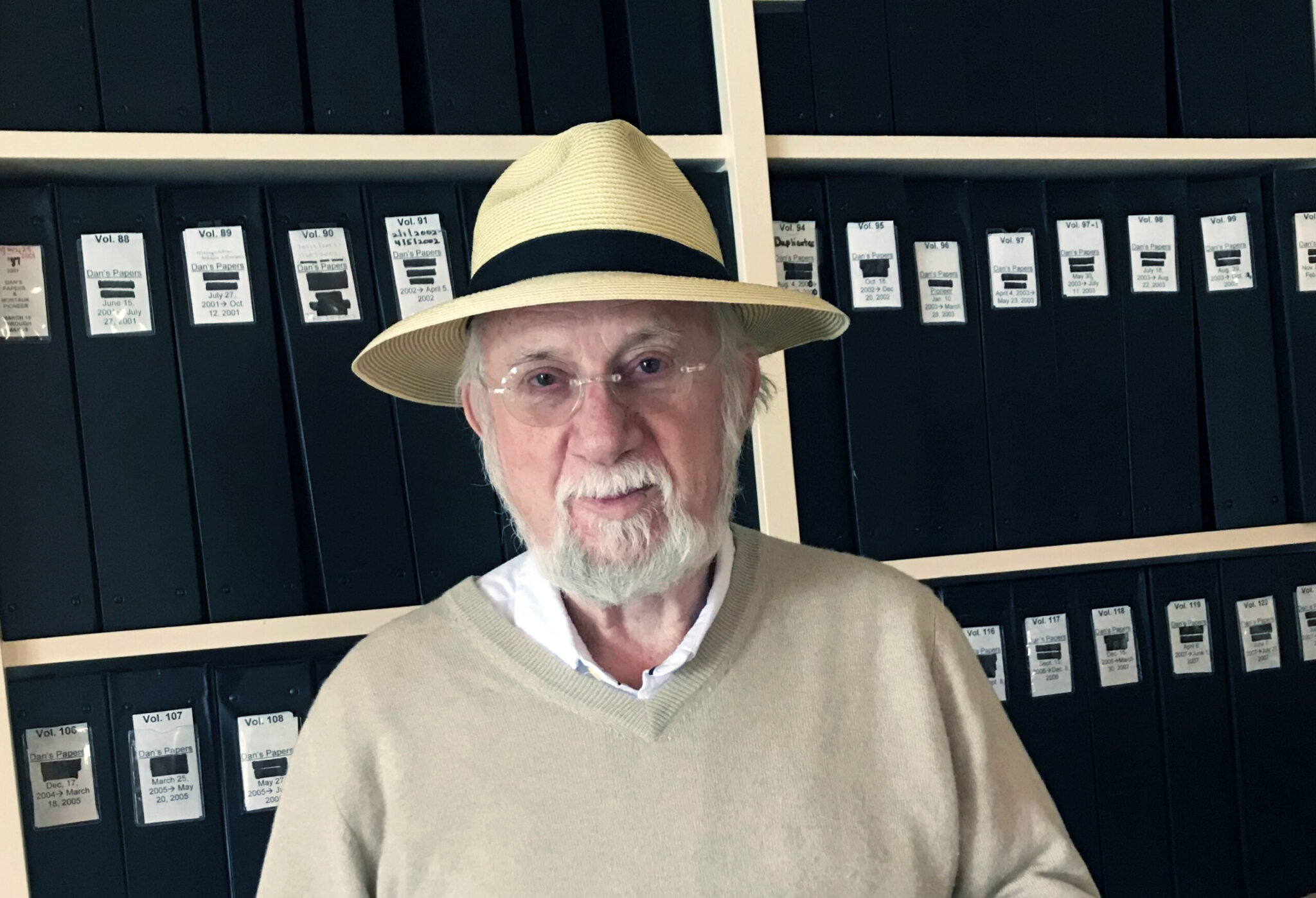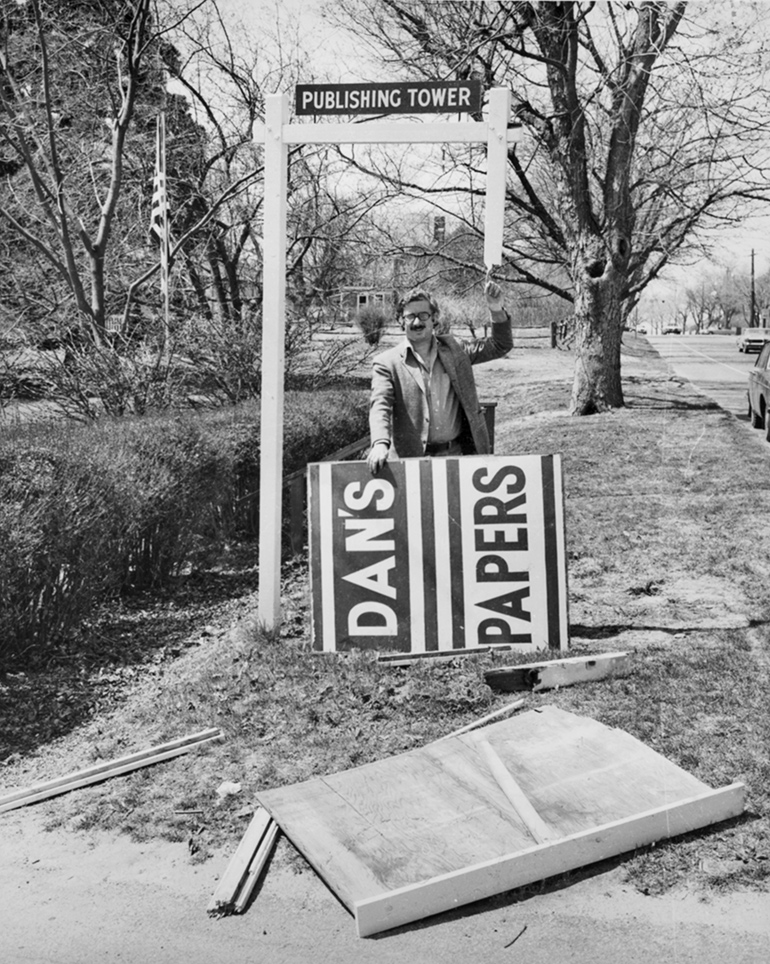The Effort to Digitally Archive 2 Tons of Dan's Papers

Stony Brook University now owns the largest private collection of Dan’s Papers in the country. It weighs almost two tons. It goes back 65 years. Currently it is being digitized so everyone can read it online and search for things in it. Parts of it are already digitized. And a little further down in this article I will share how, today, you can read it too, from the comfort of your own home.
Meanwhile, the fundraising effort goes on.
So far, the university has raised $101,000 from private donors for the digitization project.
“We only have $24,000 to go to complete the project,” said Joan McCormick, the director of development at Stony Brook’s School for Communication and Journalism. “Just one more push should put it over the top.”
What’s now available to be seen is 2011-2024. Shortly, the period 2000 to 2010 will be posted. They are doing it backwards toward 1960. And when the last bit of money is raised, you’ll be able to search the rest and all that has happened since July 1, 1960, when John F. Kennedy was president and the East End was largely potato farms and fishing villages with a sprinkling of the social set of New York City coming in the summertime.
Here’s the link that will send you to the collection: archive.org/details/stonybrookuniversitylibraries?tab=collection
Search for the coverage of the fire that burned much of Sag Harbor in 2016. Read about the broad daylight robbery of 48 handbags worth $94,000 from the Balenciaga store in downtown East Hampton in 2022. Follow the battle held to reduce the operation of the East Hampton Airport beginning in 2014, the creation of the waterfront John Steinbeck Park in Sag Harbor in 2019, the plan to create a world-class outdoor arboretum at Lake Agawam in 2021, the buried treasure of Captain Kidd on Gardiners Island in 1698, the time a motorist drove his car into East Hampton’s Town Pond in 2019, and the DWI case of Justin Timberlake in 2024.
These are among the stories that are digitized so far, along with numerous fake stories that are just plain fun to read and so outrageous as to not be believed.
For example, the panic that ensued when Dan’s Papers asked everybody to stay indoors on a particular day so that the 12 hungry lions a South African millionaire had flown in from his estate back home could be let loose to solve the East End’s deer problem.

It all began because of a small project I began in 1960. In late June, driving home to my parents’ house in Montauk after completing my sophomore year at the University of Rochester, I decided to publish a weekly newspaper out on the East End of Long Island. The first issue would be available for the Fourth of July.
In late June that year, I took the stories I’d written (longhand) for this first issue to a print shop in Freeport, Long Island, where, through the night, it was typed up and typeset, put through proofreading, and then at about 3 a.m., put on a giant flatbed press that began producing newspaper at about one a second — kathump, kathump, kathump. The print run was going to be 5,000 copies. It would take three hours.
But then, on a shelf off to one side along the wall, the first copy of that first issue — still hot, with ink almost dripping off its pages — was calling to me. As the thumping continued, I carried it out to my car, put it in the glove compartment, then returned inside until the job was completed. It was dawn. With that, the print crew and I loaded the car, a 1951 Oldsmobile Sedan, with all these bundles of papers — front seat, back seat and trunk — and off I drove for two hours on back roads to the Hamptons to place stacks of Dan’s Papers in nearly 200 stores to be given out free. The first free newspaper in the country was Dan’s Papers. There had never been one before.
Because that first issue was a success and I’d saved a copy, back in Freeport, I saved a copy of the second issue.And the following week the third. It just kept on going. And, after all this time, in 65 years I had a collection so big it outgrew the shelving in the television room, spilled over onto more shelves in an adjacent bedroom and, by the late 1990s, needed to require the construction of a library addition to my house in East Hampton. Soon all these issues, now in hardcover bindings, were filling that too.
Today, this collection is at Stony Brook University’s Whitman Library where I think it belongs: in a climate-controlled building where scholars, historians or anybody interested can visit it.
How did that get there? In 2008, at a party in the Pollock-Krasner House in Springs to celebrate the donation of the home of abstract expressionist Jackson Pollock and his wife Lee Krasner to the university, the president of Stony Brook University Shirley Strum Kenny told me she had heard about the Dan’s Papers collection and wondered if I might donate it to them to save for future generations. At the time I said maybe. But 10 years later, I said yes.
It took three workmen half a day to get the collection on their truck and to the library at Stony Brook.
Since 2008, further items have been added to the Dan Rattiner Collection. Many winters, I’ve traveled to faraway places with my wife, keeping a diary of our adventures. We stayed in some places for four months. The diaries approach 150 pages. Among them are Aix en Provence, the Canary Islands, New Zealand, Maui, St. Croix, the Soviet Union, Mazatlan, and Panajachel, Guatemala.
Kristen Nyitray, director of Special Collections and University Archives, accepted the diaries. Also in the collection are manuscripts, letters, books, and plays I’ve written over the years. One book is a manual on what to do if gravity fails. Here’s a link to that collection: stonybrook.edu/commcms/libspecial/collections/manuscripts/rattiner.php
And here’s how you can help bring the digitation project over the top. Send a donation online by going to sbugiving.com/danspapers or by mail to 230 Administration, Stony Brook University, Stony Brook NY 11794. All donations are tax deductible.









